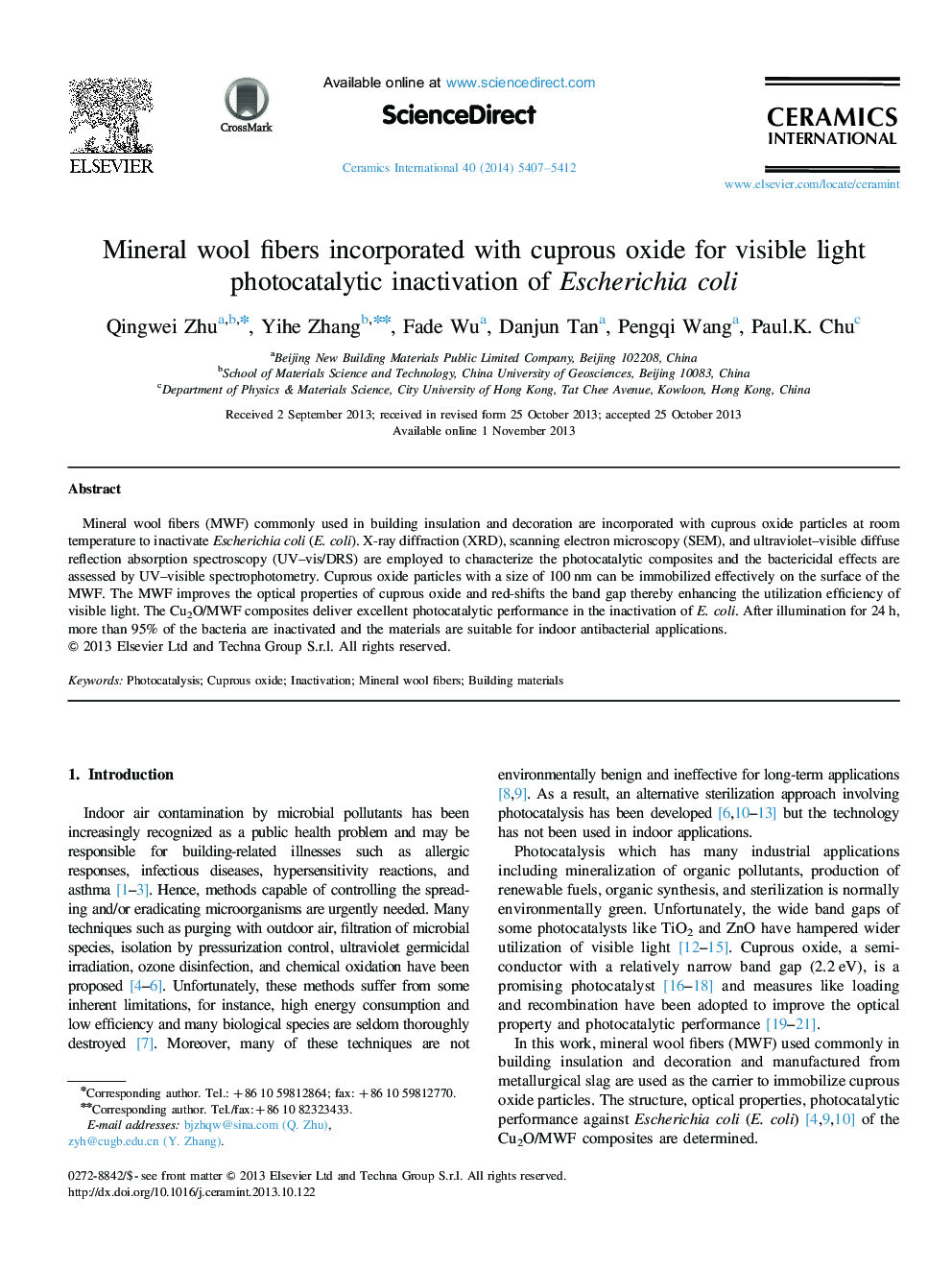| Article ID | Journal | Published Year | Pages | File Type |
|---|---|---|---|---|
| 10625740 | Ceramics International | 2014 | 6 Pages |
Abstract
Mineral wool fibers (MWF) commonly used in building insulation and decoration are incorporated with cuprous oxide particles at room temperature to inactivate Escherichia coli (E. coli). X-ray diffraction (XRD), scanning electron microscopy (SEM), and ultraviolet-visible diffuse reflection absorption spectroscopy (UV-vis/DRS) are employed to characterize the photocatalytic composites and the bactericidal effects are assessed by UV-visible spectrophotometry. Cuprous oxide particles with a size of 100Â nm can be immobilized effectively on the surface of the MWF. The MWF improves the optical properties of cuprous oxide and red-shifts the band gap thereby enhancing the utilization efficiency of visible light. The Cu2O/MWF composites deliver excellent photocatalytic performance in the inactivation of E. coli. After illumination for 24Â h, more than 95% of the bacteria are inactivated and the materials are suitable for indoor antibacterial applications.
Related Topics
Physical Sciences and Engineering
Materials Science
Ceramics and Composites
Authors
Qingwei Zhu, Yihe Zhang, Fade Wu, Danjun Tan, Pengqi Wang, Paul.K. Chu,
